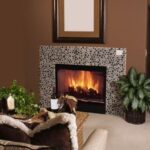Are you looking to add a unique and eco-friendly touch to your home decor? Learn how to use waste things in home decoration by upcycling everyday items that are usually thrown away. Upcycling not only reduces waste but also allows for creative and budget-friendly home decoration ideas. From repurposing old furniture to creating eye-catching artwork, there are endless possibilities for incorporating waste materials into your home decor.
Upcycling, the process of transforming discarded or unused materials into something new and of higher value, has gained popularity in the realm of interior design and home decoration. Not only does it offer an opportunity for individuals to showcase their creativity, but it also plays a significant role in environmental sustainability. By utilizing waste materials in decor, you contribute to minimizing the impact on the environment by giving a new life to items that would otherwise end up in landfills.
In this article, we will explore how everyday waste materials can serve as inspiration for creative decor projects. We’ll delve into the benefits of upcycling and examine how repurposing waste can have a positive environmental impact. Additionally, we’ll provide practical tips on finding inspiration from common household items and using them creatively to enhance your living spaces. Get ready to discover innovative ways of incorporating waste things into home decoration and infusing your space with personality and sustainability.
Finding Inspiration From Everyday Waste Materials
Identifying Common Household Waste Items
When it comes to upcycling waste materials for home decoration, there is no shortage of inspiration to be found in everyday household items. Old newspapers, glass bottles, wine corks, and even broken furniture pieces can all be transformed into unique decor elements. By taking a closer look at the items that are commonly discarded in the home, it’s possible to discover the hidden potential for repurposing and incorporating them into creative decor projects.
Creatively Using Old Newspapers, Bottles, and Other Discarded Items
Old newspapers can be turned into papier-mâché bowls or wall art, while glass bottles can be painted and used as vases or candle holders. Empty wine corks can be upcycled into coasters or even used to create a decorative cork board.
Additionally, broken furniture pieces can often be salvaged and given new life with a fresh coat of paint or a creative redesign. By thinking outside the box and seeing these items through a different lens, it’s possible to infuse one’s home with unique charm and character without spending much at all.
How to Use Waste Things in Home Decoration
In order to truly embrace the concept of upcycling in home decoration, it’s important to approach each discarded item with an open mind and a spirit of creativity. Seeing the beauty and potential in waste materials opens up countless opportunities for personal expression and environmentally-friendly design. Whether it’s repurposing old newspapers or finding new uses for glass bottles, the only limit is one’s own imagination when it comes to utilizing waste things in home decoration.
DIY Projects
Upcycling old furniture and repurposing waste materials into home decor can be a rewarding and creative endeavor. Whether you’re looking to refresh your living space or simply want to reduce waste, DIY upcycling projects are a great way to achieve both goals. With a little creativity and some basic tools, you can transform discarded items into unique pieces that add character and charm to your home.
When it comes to upcycling furniture, it’s important to start with items that are structurally sound. Look for pieces that have good bones but may need cosmetic updates. For example, an old wooden table with scratches and dents can be sanded down and given a fresh coat of paint or stain to breathe new life into it. Similarly, chairs with worn upholstery can be reupholstered with fabric scraps or old clothes for a unique and personalized touch.
In addition to furniture, there are countless ways to repurpose waste materials into home decor accents. Old glass jars can be transformed into stylish vases or candle holders, while discarded pallets can be upcycled into rustic shelves or side tables. By thinking outside the box and getting creative with everyday waste items, you can create one-of-a-kind decor pieces that reflect your personal style and commitment to sustainability.
As you embark on your DIY upcycling projects, keep in mind that the possibilities are endless. From turning old denim jeans into throw pillows to transforming wine corks into coasters, there are no shortage of ideas for breathing new life into waste materials. Not only will these projects add a unique touch to your home decor, but they will also contribute to the reduction of waste in landfills.
| Upcycling Project | Idea |
|---|---|
| Old Wooden Table | Sand down and repaint for a fresh look |
| Glass Jars | Transform into vases or candle holders |
| Pallets | Upcycle into rustic shelves or side tables |
Incorporating Upcycled Artwork and Accessories
One of the most creative and impactful ways to use waste materials in home decoration is through incorporating upcycled artwork and accessories. Not only does this breathe new life into discarded items, but it also adds a unique and personalized touch to your decor. By repurposing items that would otherwise end up in landfills, you are contributing to a more sustainable and eco-friendly lifestyle.
When it comes to upcycled artwork, the possibilities are endless. From creating collages with old magazines and newspapers to transforming broken ceramics into mosaic masterpieces, there are numerous ways to turn waste materials into stunning pieces of art. Additionally, handmade accessories such as jewelry made from upcycled materials or decorative items crafted from reclaimed wood can add character and charm to any space.
To give you some inspiration on how to use waste things in home decoration, here are some innovative ideas for incorporating upcycled artwork and accessories:
- Create a gallery wall using framed artwork made from recycled paper or fabric
- Use old CDs or vinyl records as wall art by painting or etching designs onto them
- Make decorative vases or planters out of used glass bottles and jars
- Turn scrap fabric or clothing into throw pillows, tapestries, or quilts
By exploring these creative possibilities, you can infuse your home with meaningful and sustainable decor that reflects your personal style and values. Whether it’s supporting local artisans who specialize in upcycling or tackling DIY projects yourself, incorporating upcycled artwork and accessories is a rewarding way to make your living space more environmentally-conscious.
Eco-Friendly Home Decor Tips and Tricks
When it comes to creating an eco-friendly home decor, upcycling and repurposing waste materials play a significant role. By utilizing everyday household items that are typically discarded, you can reduce waste and promote a greener lifestyle. Here are some tips and tricks on how to use waste things in home decoration:
- Repurpose old glass bottles into vases or candle holders
- Create wall art using reclaimed wood or old picture frames
- Make throw pillows from old clothing or fabric scraps
Additionally, consider incorporating sustainable decorating ideas that not only reduce waste but also add a unique touch to your home decor. For example, instead of purchasing new furniture, consider refurbishing old pieces or shopping for second-hand items at thrift stores. This not only reduces the demand for new materials but also adds character to your living space.
Furthermore, look for opportunities to use repurposed materials in your DIY projects for home decor. Whether it’s using old newspapers for papier-mâché art or transforming tin cans into stylish planters, there are countless creative ways to incorporate waste materials into your decor.
Lastly, remember that using repurposed materials in your home decoration not only benefits the environment but also allows you to express your personal style and creativity. By embracing upcycling as part of your decor strategy, you can create a unique and environmentally-friendly living space that reflects your values and commitment to sustainability.
Upcycling in Different Rooms of the House
When it comes to incorporating upcycled and repurposed materials into home decor, there are endless possibilities for creativity in every room of the house. From the living room to the bedroom, kitchen, and beyond, finding ways to use waste things in home decoration can elevate the style and sustainability of your living space.
In the living room, old wooden crates can be transformed into rustic chic coffee tables or shelving units. For a unique touch, consider using discarded pallet wood to create a one-of-a-kind accent wall.
In the bedroom, old mason jars can be repurposed as bedside table lamps, while vintage window frames can add charm as headboards or wall decor. In the kitchen, unused mugs or teacups can become charming planters for herbs or small succulents, adding greenery and character to the space.
The key to successfully upcycling in different rooms of the house lies in recognizing the potential of everyday waste materials and tapping into your creativity. By thinking outside-the-box and seeing value in items that might typically be discarded, you can infuse your home with personalized decor that is both environmentally friendly and stylish.
Whether it’s turning old clothes into throw pillow covers or using scrap fabric for DIY curtains, upcycling waste materials offers a sustainable way to decorate while reducing environmental impact.
| Room | Idea |
|---|---|
| Living Room | Repurpose wooden crates into coffee tables or shelving units |
| Bedroom | Transform mason jars into bedside table lamps |
| Kitchen | Use old mugs or teacups as planters for small herbs or succulents |
Benefits of Using Waste Materials in Home Decoration
Upcycling and repurposing waste materials in home decoration offer numerous benefits, both for the environment and for personal style. By creatively using old and discarded items, individuals can reduce their environmental impact while adding unique character to their living spaces.
Economic and Environmental Advantages
One of the primary benefits of using waste materials in home decoration is the economic advantage it provides. Repurposing old items and materials can significantly cut down on costs, as it eliminates the need to purchase new decor pieces.
Additionally, upcycling reduces the amount of waste that ends up in landfills, contributing to a more sustainable and eco-friendly lifestyle. By giving new life to old items, individuals can also decrease their consumption of new products, helping to conserve natural resources.
Enhanced Personal Style and Creativity
Using waste materials in home decoration allows for a great deal of creativity and personalization. Upcycling offers unique opportunities to create one-of-a-kind decor pieces that reflect individual style preferences.
Whether it’s transforming an old wooden pallet into a wall shelf or repurposing glass jars into charming candle holders, upcycled decor adds a distinctive touch to any home. This creative process also encourages individuals to think outside the box and experiment with different materials, textures, and colors, leading to a more personalized and meaningful living space.
The positive impact of upcycled decor goes beyond just aesthetics. It fosters creativity and resourcefulness while promoting a greater appreciation for sustainability. Using waste materials in home decoration not only benefits the environment but also allows individuals to express their personal style in an affordable and eco-friendly way.
Resources for Upcycling and Sustainable Home Decor
In conclusion, the practice of upcycling waste materials for home decoration not only adds a unique and creative touch to living spaces but also has a positive impact on the environment. By creatively repurposing everyday items that would otherwise end up in landfills, individuals can reduce their carbon footprint and contribute to a more sustainable lifestyle. With the abundance of inspiration and DIY tutorials available, it’s easier than ever to incorporate upcycled decor into any home.
One of the most appealing aspects of upcycling is the opportunity to let creativity run wild. From transforming old furniture into stylish statement pieces to creating handmade accessories and artwork from discarded materials, there are endless possibilities for incorporating waste materials into home decor. This not only adds character and charm to living spaces but also allows individuals to express their personal style in an eco-friendly way.
Furthermore, by utilizing waste things in home decoration, individuals can also save money while reducing their environmental impact. There is a sense of satisfaction that comes with repurposing items that would have otherwise been discarded, knowing that they are being given a new purpose and lease on life.
Whether it’s using old newspapers for papier-mâché wall art or turning glass bottles into decorative vases, the process of upcycling waste materials can be both fulfilling and environmentally responsible. With the right resources and inspiration, anyone can embark on this journey towards sustainable home decor.
Frequently Asked Questions
How Do You Use Waste Material for Decorations?
Waste material can be used for decorations by upcycling or repurposing items like glass bottles, tin cans, and old fabric. These materials can be transformed into vases, candle holders, or even art pieces through creative DIY projects.
How Can We Make Waste Products Useful?
Waste products can be made useful through recycling and reusing. For example, plastic bottles can be turned into planters, old newspapers can be used for papier-mâché projects, and food scraps can be composted to enrich soil.
How Do You Make Eco Friendly Decorations?
Eco-friendly decorations can be made by using sustainable materials such as recycled paper, natural fibers, or upcycled wood. Avoiding single-use plastics and opting for biodegradable options helps minimize environmental impact when making decorations for events or home decor.

I’m thrilled to be your companion on this exciting journey through the world of home decor and design. With a passion for turning houses into homes and a keen eye for the finer details, I’m here to help you transform your living spaces into beautiful, functional, and meaningful havens.





